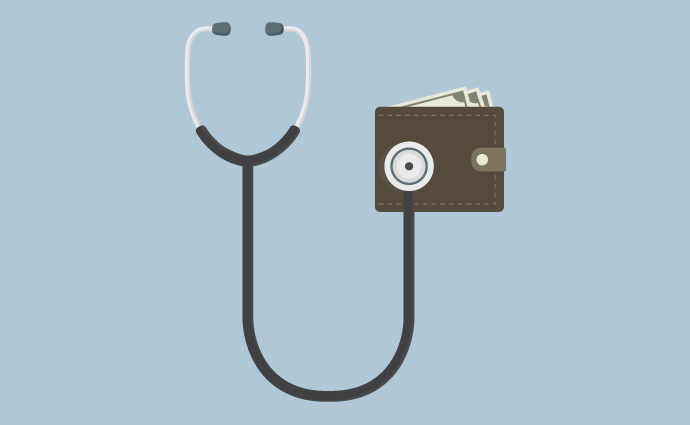Mitigating the Risk of Uncompensated Care to the Revenue Cycle
Uncompensated care remains a growing problem for healthcare providers, but scanning the entire revenue cycle can help find missing coverage quickly.

Source: Thinkstock
- Despite a tentative dip in the wake of the Affordable Care Act, the number of uninsured Americans seems to be creeping back up. The latest figures from the US Census Bureau report suggest an additional two million people found themselves without medical coverage in 2018.
The rate of increase appears to be slowing, but the growth of uncompensated care remains a significant worry for many hospital CFOs. Patients living without insurance may hold off from seeking care for fear of unaffordable bills, increasing the likelihood that they will require more serious (and expensive) treatment later on.
As the “insurer of last resort,” providers end up handing these cases over to collections agencies and absorbing a major cost burden. The American Hospital Association reports that hospitals have written off as much as $620 billion over the last two decades.
The challenge of uncompensated care was already a tough pill to swallow, but with new pressures looming — most recently with the COVID-19 pandemic — it’s crucial that each patient’s coverage status is confirmed quickly and accurately.
Find active coverage sooner to close the trust gap and avoid lost revenue
Surprisingly, many hospitals fail to run proper coverage checks before billing the patient. In October 2019, Kaiser Health News reported that nearly half of non-profit hospitals were routinely billing patients who were probably eligible for charity assistance. Over the course of a year, a total of $2.7 billion ended up being written off unnecessarily.
A better plan would be to work quickly to close the coverage gap. Finding as much active coverage as possible as soon as possible allows patients to come in for treatment feeling confident that there’s a plan in place to help them pay for care. And with a more compassionate collections strategy, providers will increase the chance of full reimbursement and reap the benefits of improved patient loyalty.
“When patients are wrongly classified as uninsured or under-insured, providers lose revenue,” says Jason Considine, General Manager for Patient Experience and Collections at Experian Health.
“We know this is stressful for patients and it can be a huge waste of resources for staff to be running manual checks,” he adds. “An automated solution can solve for these challenges. Being able to create a seamless workflow for finding additional coverage — that’s more patient-centric, faster and more accurate — is a huge asset for providers.”
Four steps to find missing coverage and avoid uncompensated care
To find missing coverage, providers should scan for coverage at all stages of the revenue cycle. Automated software can trigger searches at each point and cross-check patient accounts against multiple data sets for previously undiscovered coverage:
- Pre-service. As soon as a patient is scheduled for treatment, an automatic search of commercial and government payers can be carried out to surface previously unknown coverage, so the patient’s aware of his or her insurance situation before he or she comes in.
- Time of Service. A patient’s coverage can change, for example if he or she switches employers or changes address. Running an “on demand” scan when the patient arrives for treatment will confirm that coverage details are completely up to date.
- Post-service. After the patient’s treatment, the provider should scan patient balances to look for active insurance 30, 60 and 90 days after service. This belt-and-braces approach ensures no coverage has been missed before bills are issued and means staff won’t waste time following up the wrong bills.
- Last in line. A final check before sending the patient account to bad debt collections helps catch any missed entitlements to make sure the account is handled correctly and create a better patient experience.
Essentia Health in Minnesota used a whole-cycle approach to coverage discovery, with impressive results.
“We found 67% of coverage for patient accounts that were self-pay or uninsured at the time of pre-service, and 33% at the time of post-service,” Patient Access Director Kathryn Wrazidlo reveals. “This has helped patients because we’re actually billing their insurance versus billing them for self-pay. And it’s helping staff because they’re billing the insurance company much quicker, and there’s less rework.”
Integrating this type of automated discovery solution into the provider’s revenue cycle eliminates the need to engage a third-party collections agency, allowing the hospital to maintain a direct (and likely more compassionate) relationship with patients. In this way, the knock-on effect of reducing bad debt will improve patient satisfaction and yield more comprehensive productivity-boosting insights into the whole revenue cycle.
___________________________________________________________-
About Experian Health
For over 25 years, Experian Health has delivered revenue cycle solutions designed to create a frictionless experience between patients, payers and providers. We deliver the best in machine learning, AI and automation to eliminate inefficiencies, drive up productivity and provide precise data matching. With our data intelligence, we can arm providers — and in some cases consumers themselves — with accurate and timely information to help reduce uncompensated care.
Our Coverage Discovery solution has helped US hospitals find coverage associated with $5.8 billion in charges. Discover how we can help your organization find previously unidentified coverage and reduce bad debt.
